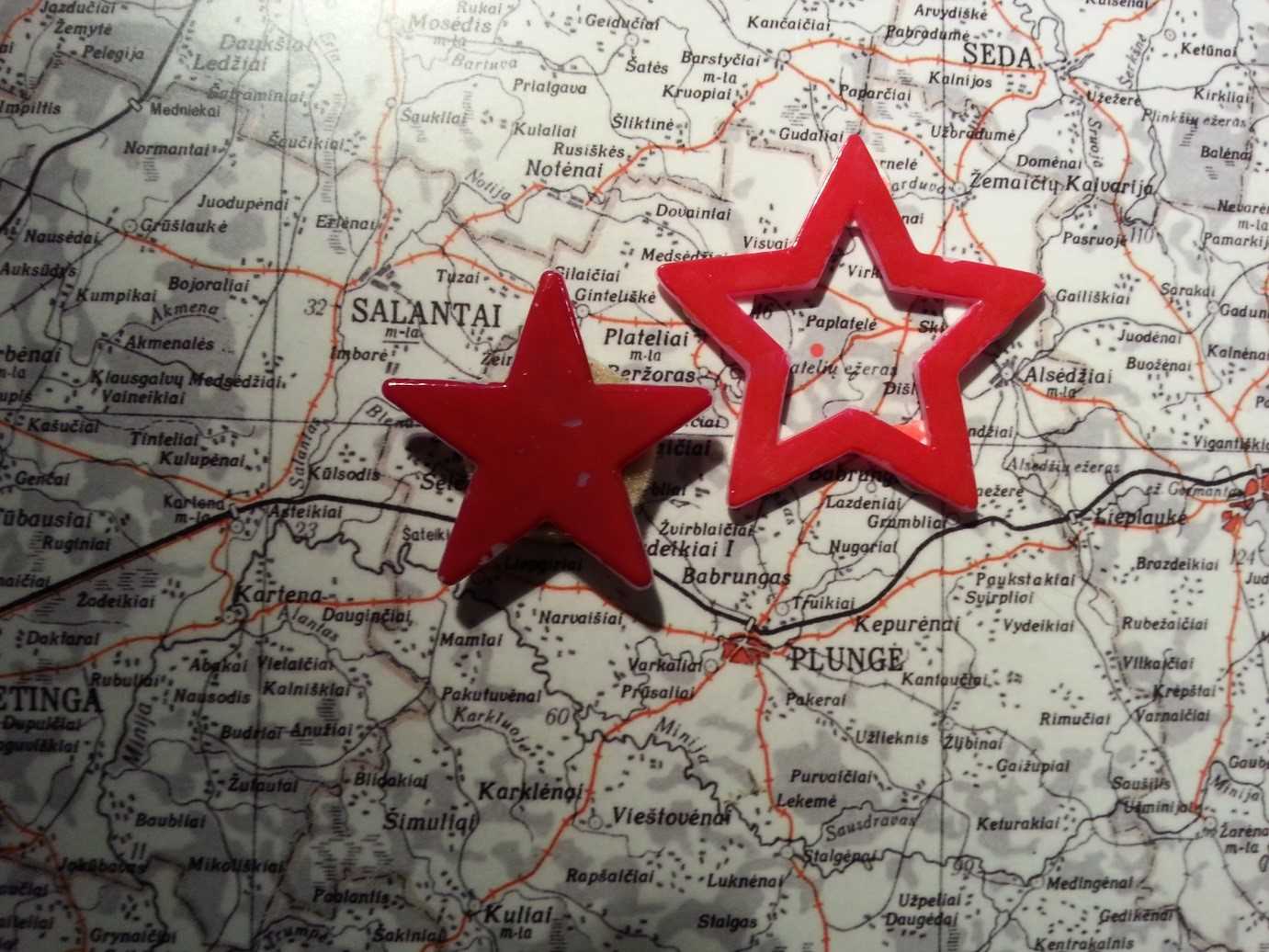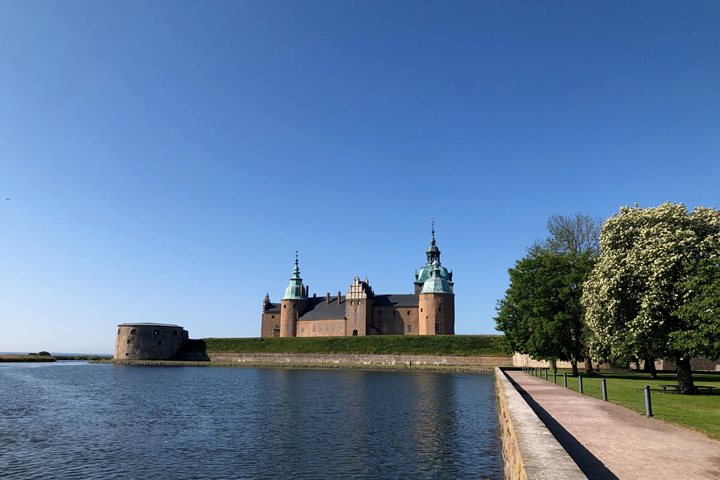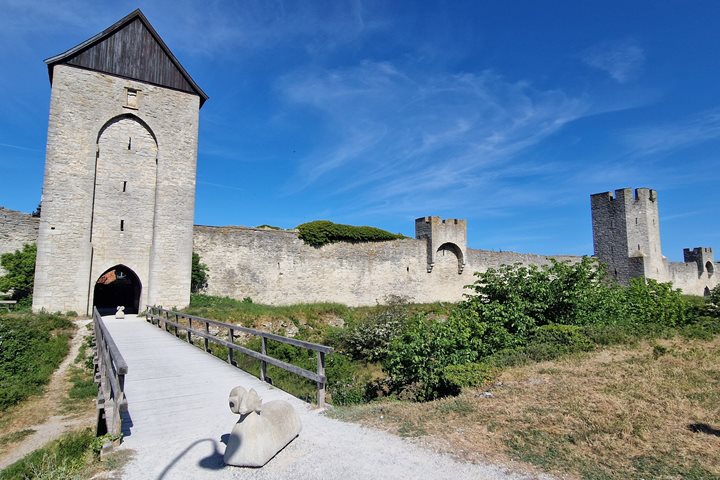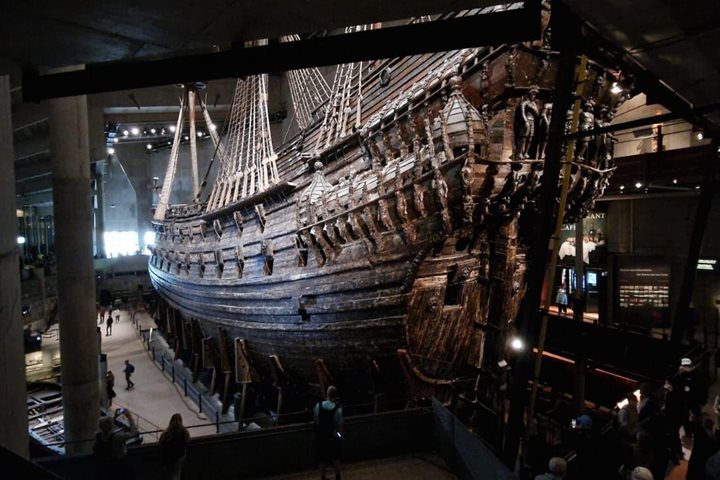Our only stop in Lithuania took place on a particularly fine day. Spring has finally arrived. Guests were greeted by a full folklore orchestra of twelve plucky musicians, braving the early morning chill.
Klaipeda is Lithuania’s largest (and only) seaport. It lies at the mouth of the “Curonian Haf,” the lagoon that is formed by the river Nemunas, shielded from open sea by the extraordinary geological feature that is the “Curonian Spit,” a very narrow strip of dunes, stretching from Kaliningrad in the south.
Most of today’s excursions focused on that peninsula, with buses going off to see the “Hill of the Witches,” a charming path through the forest with dozens of sculptures, carved in wood, displaying the wealth of Lithuanian legends. Others crossed the lagoon to bike through the dune landscape, hoping to catch a glimpse of the elk that live here.
My trip went deeper in land and deeper into Lithuanian history. Our small group travelled an hour and a half to the Žemaitija National Park, near the town of Plateliai in the northwest of Lithuania. It is a beautiful green area, peppered with lakes and sparsely populated; the European lynx can still be seen here. But in the middle of that greenery, the Red Army constructed an underground base for long range nuclear missiles, the Plokštinė missile base. In operation from 1961 until 1987, its missiles were able to hit any target in Europe, including Turkey and southern European countries. This is the kind of location where the Cold War was at its coldest; the missiles that provoked the Cuban Missile Crisis came from this very base.
The base is now deserted. The army barracks have largely vanished and the site has become a well-designed historical site. Our guide was a young Romanian stationed in the park as part of her Erasmus exchange project, one of many instances of European Union influence. The base consists of an underground complex with four launch silos, 30 meters deep, covered by massive steel roofs. We entered the underground system – a chilly place (they don’t call it “Cold War” for nothing). The exhibits showed Soviet soldiers stationed at their desks, prepared for the unthinkable.
Other rooms showed – in rather a balanced way – the face of the Cold War conflict. Propaganda of both sides, manuals preparing the population for the Great Day, energetic film clips of the officers at their clunky 1960s machinery, ready to launch. It didn’t take much to feel the actual chill of those times. Our Lithuanian guide, Lilija, was on hand to supply her personal story – how she had to have Kalashnikov lessons at school, how she felt that in Soviet times it was better not to smile at people you didn’t know. When one of her students (she taught English) mentioned his interest in the priesthood – she was told she’d lose her job, and he was arrested and lost a few fingers.
Strange contrast: the weather was lovely, the park bursting with spring, birds everywhere – mostly storks. Every farm has a stork nest, high on a pole, and the mighty birds were actively patrolling the grasslands.
Lunch was at a delightful place, very popular with locals. The menu was as Lithuanian as it comes: beautiful pink Šaltibarščiai (a cold soup of beetroot), gherkins and kefir, followed by cepelinai, or “zeppelins.” These are substantial masses of potato mash – zeppelin-shaped – filled with pork, accompanied by ubiquitous sour cream (and a small glass of suktinis, a strong mead nectar that is 50% alcohol).
Within half an hour we were back in Klaipeda for some leisurely shopping. The Curonian lagoon is a prime location for finding amber. The town itself has been badly damaged over the years – contested by Germany, Lithuania and Russia over the centuries – but it has regained its charm and awaits an even better future.
National Geographic Orion sailed away at 7.30 PM, heading for Gdansk. After a seven-course dégustation dinner we were given a special treat, a lecture by one of our guests, Tom Perera, Emeritus Professor of MSU, and a world renowned expert on the Enigma machine.







